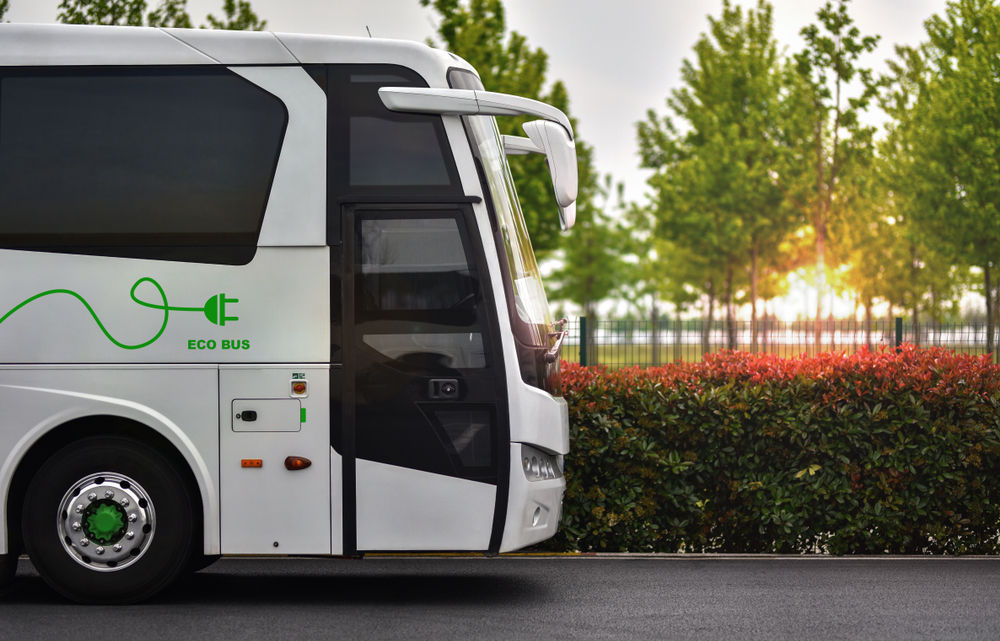On January 7, 2022, North Carolina Governor Roy Cooper issued Executive Order (EO) 246, which affirms “North Carolina’s commitment to a clean energy economy and [directs] next steps in the state’s plan to achieve net-zero greenhouse gas emissions and create economic opportunities for North Carolinians across the state, especially in underserved communities,” states the governor’s press release.
The EO strengthens North Carolina’s commitment to reduced greenhouse gas (GHG) emissions by increasing the state’s goal to a 50% reduction from 2005 levels by 2030 and achieving statewide net-zero GHG emissions by 2050.
“[It] also takes steps to encourage and prepare for North Carolina’s transition to a clean transportation future. The Order calls for an increase in registered zero-emission vehicles (ZEVs) to at least 1,250,000 by 2030 and for 50% of sales of new vehicles in North Carolina to be zero-emission by 2030,” states the press release. “It also directs the North Carolina Department of Transportation to develop a North Carolina Clean Transportation Plan for decarbonizing the transportation sector through reductions in vehicle miles traveled, an increase in zero-emission cars, trucks, and buses, and other strategies.”
“Transforming North Carolina toward a clean energy and more equitable economy will provide good jobs and a healthy environment for generations of families across our state. To achieve our goals we must be clear, intentional and determined,” Cooper says. “We’ve made monumental progress by developing a clean energy plan tailored to our state’s unique challenges and opportunities and passing into law required carbon reduction goals for utility providers. This order will assess our progress reducing climate pollution, and direct ways to curb environmental injustices, increase clean transportation options, and build more resilient communities in North Carolina.”
North Carolina joins 12 other states in enacting mandates to achieve long-term emissions reductions goals:
- California
- Colorado
- Connecticut
- Maine
- Maryland
- Massachusetts
- New Jersey
- New York
- Oregon
- Rhode Island
- Vermont
- Washington
Companies in the clean technology sector should follow developments and opportunities in North Carolina closely.
As an example, Toyota is building its first North American battery manufacturing plant in North Carolina, and Smart Wires, Inc, a company working for the advancement clean energy, selected Durham, North Carolina, as its worldwide headquarters.
North Carolina has made steady advancements to support progress in clean energy and environmental justice and efforts to achieve net-zero emissions, reports a Lexology article by Womble Bond Dickinson, LLP.
Cooper’s recent EO builds upon past EOs he has issued:
- EO 80 addressed North Carolina’s commitment to reaching climate change goals.
- EO 143 established the Andrea Harris Social, Economic, Environmental, and Health Equity Task Force to address long-term disparities in communities of color.
- EO 218 outlines North Carolina’s commitment to offshore wind energy.
“These policies and actions are not just happening at the Executive level,” states the Womble Bond Dickinson article. “In October 2021, the NC Legislature passed House Bill 951, a bipartisan law requiring the North Carolina Utilities Commission to take ‘all reasonable steps’ to reduce carbon emissions from electric public utilities by 70 percent from 2005 levels by the year 2030 and achieve carbon neutrality by 2050. Among other things, the new law requires the Commission to produce a Carbon Plan through a stakeholder process ‘no later than’ December 31, 2022.
“Companies near and far should monitor policy developments in [North Carolina] over the next few years to identify emerging commercial opportunities,” advises Womble Bond Dickinson. “[EO] 246’s emphasis on decarbonizing the transportation industry suggests some of the specific resources and technologies that could likely emerge as winners. It is quite likely that the North Carolina Clean Transportation Plan may spur growth in renewable natural gas generation and further developments in the application of hydrogen as part of the transition to low-emission transportation fuels. Additionally, battery technology is likely to play a key role in the transition to widespread electric vehicle use. Notably the tin-spodumene belt of the Carolinas contains the largest reserves of lithium in the United States, making North Carolina a natural hub for battery manufacturing. Increased adoption of electric vehicle use in the state will require significant investment in electricity distribution infrastructure and vehicle charging stations. Further, increasing access to vehicle charging stations could entail implementation of solar powered charging resources. Solar generation, paired with battery storage, may be central to the development of a more widespread, reliable vehicle charging network while simultaneously providing additional reductions in carbon emissions.”

